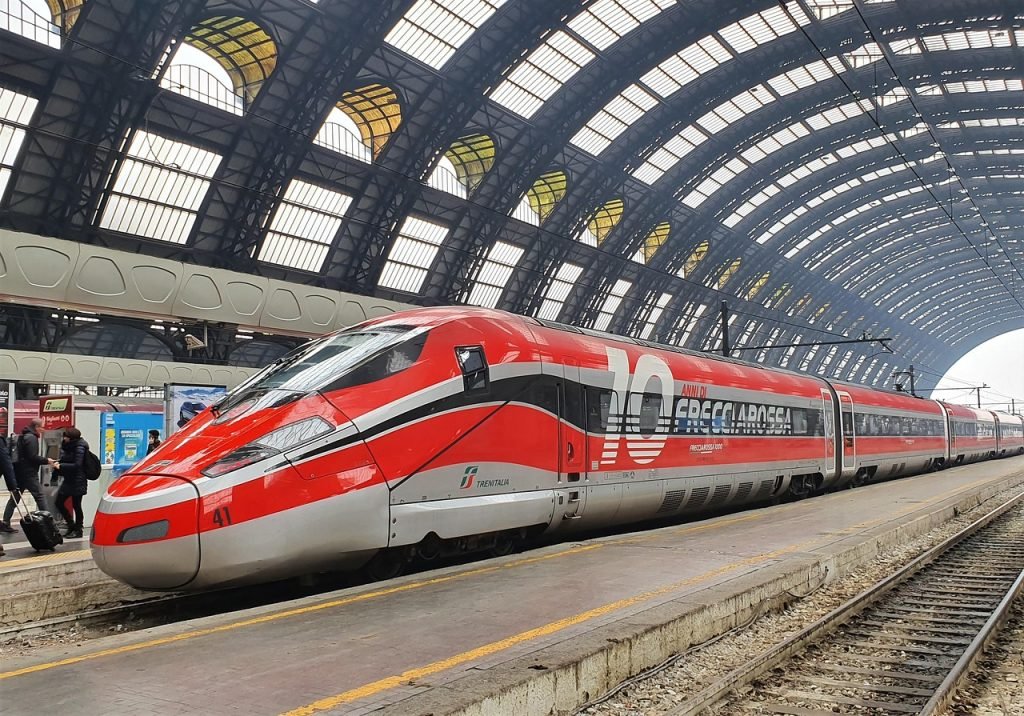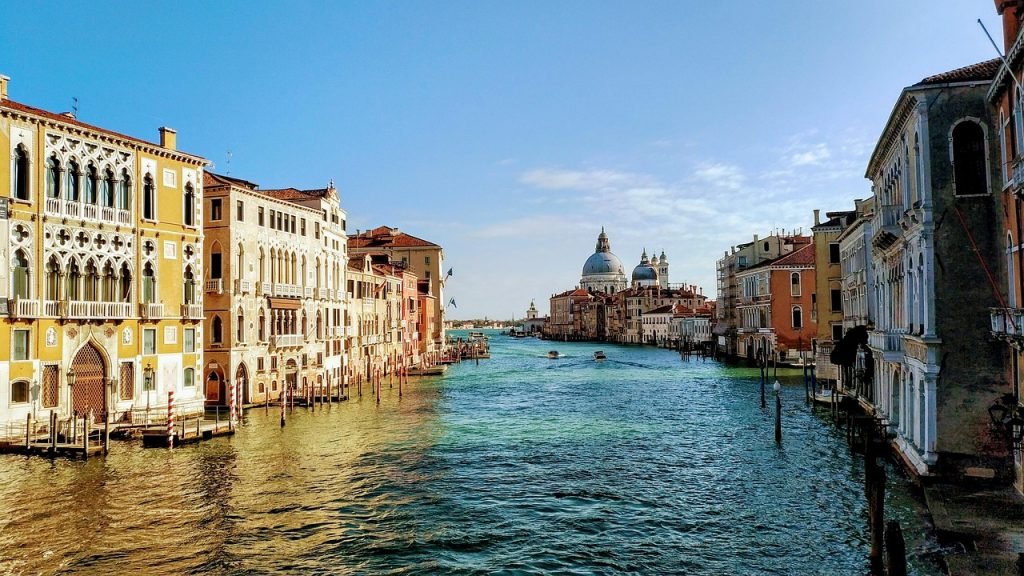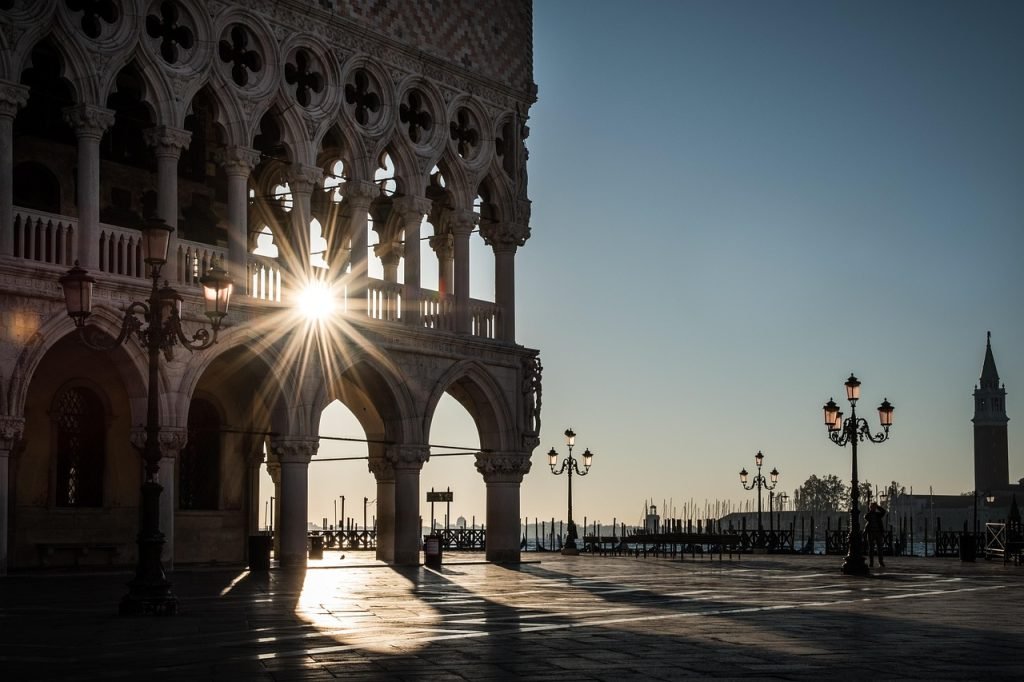If Venice offers Italy’s most romantic introduction, Milan provides its most dynamic one. Landing at Milan Malpensa or Linate airports, you’re stepping into Italy’s economic powerhouse—a city where fashion, finance, and innovation pulse through streets that have witnessed everything from Roman conquests to Renaissance brilliance to modern industrial revolution.
This comprehensive Italy itinerary for first-time visitors focuses on the country’s urban giants, connecting Milan’s northern sophistication with Florence’s Renaissance grandeur, Rome’s eternal majesty, and Naples’ southern soul. Each city represents a different facet of Italian civilization, yet together they form a complete portrait of a nation that seamlessly blends ancient wisdom with cutting-edge modernity.
Unlike the Venice-focused route, this Milan-centric journey showcases Italy’s metropolitan heart while providing access to some of the country’s most spectacular natural beauty through carefully chosen day trips to the legendary Italian Lakes.
Milan: Fashion Capital Meets Alpine Beauty (3 Nights)
Milan surprises first-time Italian visitors who expect all of Italy to be draped in Renaissance architecture and ancient ruins. This is Italy’s New York—fast-paced, business-focused, and utterly contemporary, yet with layers of history that reveal themselves to those who look beyond the gleaming shop windows and towering skyscrapers.
Milanese people are different from other Italians—more punctual, more reserved, dressed impeccably even for grocery shopping. They speak excellent English, work longer hours, and their aperitivo culture rivals any city in the world. Milan proves that Italy isn’t stuck in the past but actively shapes global trends in fashion, design, and lifestyle.
Day 1: Metropolitan Milan
Start at the Gothic masterpiece that is the Duomo di Milano. The cathedral’s elaborate spires and flying buttresses represent six centuries of architectural evolution, while the rooftop terraces offer panoramic views of the Alps on clear days. The adjacent Galleria Vittorio Emanuele II isn’t just a shopping mall—it’s a glass-roofed wonder from 1877 that pioneered the concept of luxury retail spaces. Even if you’re not shopping for €3,000 handbags, the architecture and people-watching are world-class entertainment.
Dedicate your afternoon to the Quadrilatero della Moda (Fashion Quadrilateral), where Via Montenapoleone, Via della Spiga, and surrounding streets form the epicenter of global fashion. Even window shopping here is an education in Italian style and craftsmanship.
Evening belongs to the Navigli district, Milan’s canal area designed partly by Leonardo da Vinci. The aperitivo scene here is legendary—for the price of one drink, you’ll receive access to elaborate buffets that could substitute for dinner. This is where you’ll understand that Milanese social life happens at a different rhythm than the rest of Italy.
Milan’s cuisine reflects its position as Italy’s international city. Traditional Lombard dishes like risotto alla milanese (saffron risotto), cotoletta alla milanese (breaded veal cutlet), and cassoeula (pork and cabbage stew) share menu space with innovative fusion cuisine and international flavors. The city’s restaurant scene is arguably Italy’s most diverse and experimental.
Day 2: Lake Como – Where Celebrities Choose to Hide
The train journey from Milan to Como takes just one hour, but you’re traveling from urban sophistication to Alpine serenity. Lake Como has attracted everyone from ancient Roman nobles to modern Hollywood stars, and one glimpse of its dramatic beauty explains why George Clooney chose to make his home here.
Take the ferry from Como to Bellagio, often called the “Pearl of the Lake.” The journey itself is magical—Art Nouveau villas peek through Mediterranean vegetation while snow-capped Alps provide a dramatic backdrop. Bellagio’s narrow cobblestone streets, boutique shops, and lakeside cafes create an atmosphere of refined tranquility that feels worlds away from Milan’s intensity.
Visit Villa del Balbianello (featured in Star Wars and James Bond films) or simply wander Bellagio’s gardens while soaking in views that have inspired artists and writers for centuries. The lake’s microclimate allows palm trees and olive groves to flourish alongside Alpine flora—a uniquely Italian combination of Mediterranean warmth and mountain drama.
Day 3: Choose Your Alpine Adventure
Option A: Lake Maggiore and Stresa
Lake Maggiore offers a more aristocratic atmosphere than Como, with the Borromean Islands serving as baroque jewels in the pristine waters. The Isola Bella’s terraced gardens and palace represent Italian garden design at its most theatrical, while Isola Madre enchants with its botanical paradise.
Option B: Bergamo – Medieval Gem in Modern Lombardy
The funicular railway to Bergamo Alta (Upper Bergamo) transports you to a perfectly preserved medieval city surrounded by 16th-century Venetian walls (now a UNESCO World Heritage site). The contrast between modern Bergamo Bassa below and the ancient hilltop city creates a fascinating study in Italian urban evolution.
Option C: Lake Iseo and Monte Isola
Italy’s most underrated lake offers authentic experiences without the crowds. Monte Isola, Europe’s largest lake island, provides hiking trails, fishing villages, and panoramic views that rival more famous destinations while maintaining an authentically local atmosphere.
The Southern Journey: Italy’s Rail Revolution
Milan’s position as Italy’s high-speed rail hub makes southward travel effortless. Both Trenitalia’s Freccia Rossa and Italo depart regularly from Milano Centrale, one of Europe’s most impressive railway stations. The journey south unfolds like a geological timeline—Alpine foothills give way to Po Valley plains, then Tuscan hills, Roman countryside, and finally the volcanic landscapes of Campania.
Critical timing advice: Italian high-speed trains, while generally reliable, can experience delays during peak seasons or adverse weather. Plan your connections with generous buffer time—2 hours between train arrival and important bookings or tours. Italy rewards patient travelers and punishes those who overschedule.
Florence: Renaissance Capital (2 Nights)
The high-speed train from Milan to Florence takes about two hours, crossing landscapes that transition from northern Italian Alps to Tuscan hills dotted with cypress trees and vineyard-covered slopes. Florence announces itself gradually—first medieval towers piercing the horizon, then Brunelleschi’s dome rising above terracotta rooftops like a Renaissance dream made manifest. Florence represents the intellectual and artistic heart of Italy. While Milan looks forward, Florence preserves and celebrates the achievements that made Italy the cradle of Western art and humanism.
Day 1: Start at the Duomo complex before dawn to avoid crowds and witness the city awakening. Climbing Brunelleschi’s dome is mandatory—the engineering genius of the 15th century still impresses modern architects. The afternoon belongs to the Uffizi. Botticelli’s “Birth of Venus” and Leonardo’s “Annunciation” alone justify the visit, but the entire collection represents the greatest concentration of Renaissance masterpieces on earth.
Day 2: Cross the Arno to explore Oltrarno, Florence’s “left bank”. The Pitti Palace and Boboli Gardens offer respite from the city center’s intensity, while the Palazzo Pitti’s royal apartments showcase how Renaissance wealth translated into daily luxury.
Florentine cuisine emphasizes simplicity and local ingredients. Bistecca alla Fiorentina (massive T-bone steak) represents Tuscan cooking at its most elemental—superb beef, minimal seasoning, perfect execution. Try ribollita (vegetable and bread soup), and any pasta with wild boar ragu.
Rome: The Eternal City’s Urban Complexity (3 Nights)
The high-speed train from Florence to Rome takes less than 90 minutes, but you’re traveling through millennia of history. Rome defies easy categorization—it’s simultaneously ancient and modern, chaotic and organized, overwhelming and intimate. Rome requires at least two full days, but three is better if you want to do more than simply check boxes. The city rewards those who embrace its seemingly chaotic rhythm—aperitivo hour that stretches into dinner, and meals that last for hours.
Do you have 3 days? Great here is a dedicated guide: Perfect 3-Day Rome Itinerary
Day 1: Ancient Rome demands a full day. Start before dawn at the Colosseum, then explore the Roman Forum and Palatine Hill. These aren’t just tourist sites but the foundation stones of Western civilization. Afternoon brings the Pantheon and the atmospheric streets of medieval Rome.
Day 2: Vatican City is technically a separate country but practically part of the Roman experience. The Sistine Chapel overwhelms even prepared visitors—Michelangelo’s ceiling and “Last Judgment” represent human artistic achievement at its peak. Book guided tours to understand the theological and political messages embedded in the art.
Day 3: “Real” Rome reveals itself in Trastevere’s narrow streets, Campo de’ Fiori’s morning market, and the Jewish Quarter’s ancient synagogue and modern restaurants. This is where contemporary Romans live, work, and socialize, maintaining traditions that stretch back millennia while adapting to modern urban realities.
Roman cuisine is bold, uncompromising, and based on humble ingredients transformed through technique and tradition. The “holy trinity” of Roman pasta—carbonara, amatriciana, and cacio e pepe—represents Italian cooking at its most essential. Each dish requires perfect technique and timing; there’s nowhere to hide inferior ingredients or sloppy execution.
Naples and the South: Italy’s Passionate Finale (3-4 Nights)
The high-speed train from Rome to Naples takes slightly over an hour, but you’re entering a fundamentally different Italy. Naples is raw, authentic, and emotionally intense—a city where life happens in the streets with an energy that can overwhelm northern visitors but becomes addictive once you surrender to its rhythm.
Naples (1-2 nights): Don’t let outdated stereotypes prevent you from experiencing authentic Naples. Yes, it’s grittier than Florence or Milan, but it’s also more genuinely alive. The historic center is a UNESCO World Heritage site containing incredible churches, underground Greek and Roman ruins, and the birthplace of pizza. To live fully your visit I made the following post: 15 Essential Naples Experiences.
Neapolitan pizza is a religious experience—thin crust charred in wood-fired ovens, simple ingredients of extraordinary quality, perfect technique passed down through generations. L’Antica Pizzeria da Michele and Sorbillo represent different approaches to pizza perfection, but both deliver transcendent experiences that redefine what pizza can be.
Sorrento (2 nights base for southern exploration): Use Sorrento, the city of lemons, as your base for exploring the region’s natural wonders. The town perches on cliffs overlooking the Bay of Naples with Mount Vesuvius providing dramatic backdrop.
Capri (Day trip): The ferry to Capri takes you to an island that has seduced everyone from Roman Emperor Tiberius to modern celebrities. The Blue Grotto (weather permitting) offers magical experiences, but even without it, Capri’s dramatic landscapes and sophisticated atmosphere justify the visit.
Amalfi Coast (Day trip): The bus journey along the coast provides some of the world’s most spectacular scenery—narrow roads carved into cliffsides with the Mediterranean sparkling hundreds of feet below. Positano’s pastel houses cascade down cliffs, Amalfi showcases its maritime heritage, and Ravello offers gardens with jaw-dropping views.
Essential Timing and Practical Considerations
This represents minimum time requirements: The suggested nights (Milan 3, Florence 2-3, Rome 3, Naples/South 3-4) provide basic introductions to each destination. Adding extra nights wherever possible transforms rushed sightseeing into genuine cultural immersion.
Must-consider day trips:
- From Florence: Pisa for the iconic Leaning Tower, Siena for medieval perfection, or Tuscan wine regions
- From Rome: Tivoli’s Villa d’Este and Hadrian’s Villa, or Ostia Antica’s remarkably preserved Roman port city
- From Naples: Pompeii and Vesuvius (unmissable archaeological experiences), or the opulent Reggia di Caserta
Transportation wisdom: Book high-speed train tickets online at Trenitalia.com or Italotreno.com for significant savings. First-class upgrades often provide worthwhile comfort improvements. Always allow buffer time between connections—Italian efficiency operates on Italian time scales.
The Italy That Transforms You
This Milan-focused itinerary showcases Italy’s urban sophistication while providing access to natural beauty that has inspired artists for millennia. Each city reveals different facets of Italian civilization—Milan’s forward-looking dynamism, Florence’s Renaissance achievements, Rome’s imperial grandeur, and Naples’ authentic passion.
The high-speed rail connections make this journey effortless while providing opportunities to watch Italian landscapes unfold like living art. You’ll return home with more than photographs and memories—you’ll carry new understanding of how ancient wisdom and modern innovation can coexist, how urban sophistication and natural beauty complement each other, and how life can be lived with style, passion, and appreciation for both tradition and progress.
Italy doesn’t just show you its treasures—it invites you to become part of its ongoing story, whether through Milan’s fashion districts, Florence’s art studios, Rome’s eternal neighborhoods, or Naples’ vibrant street life. This is Italy’s urban heart beating in rhythm with landscapes and traditions that have shaped Western civilization for over two millennia.


